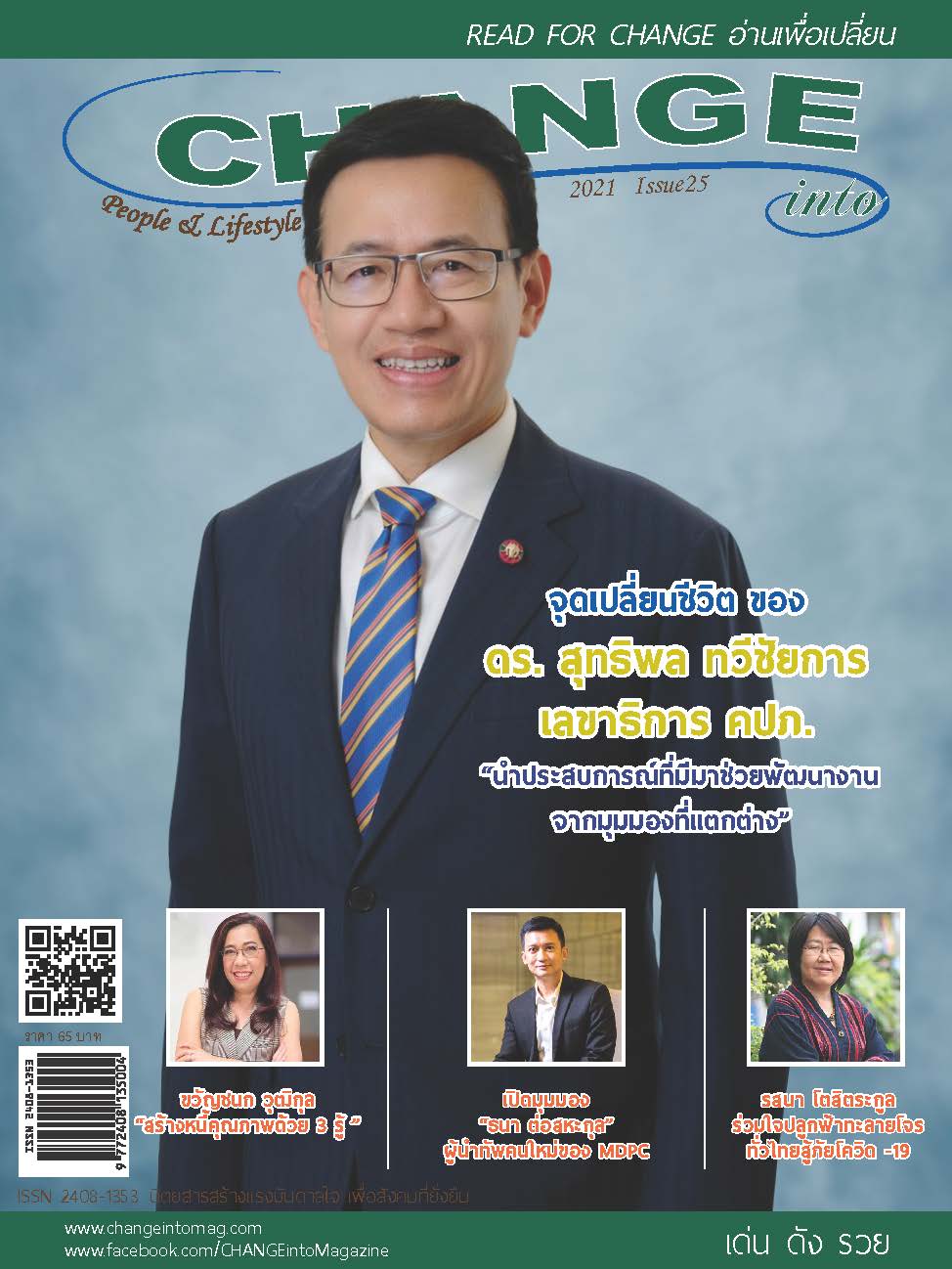ศูนย์วิจัยกสิกรไทยมองเศรษฐกิจฟื้นตัวลักษณะ U-Shaped ขณะที่ปรับจีดีพีปีนี้หดตัว 10%

ศูนย์วิจัยกสิกรไทยมองเศรษฐกิจฟื้นตัวลักษณะ U-Shaped ขณะที่ปรับจีดีพีปีนี้หดตัว 10%
ศูนย์วิจัยกสิกรไทยมองเศรษฐกิจไทยแตะระดับต่ำสุดเมื่อไตรมาส 2 ของปีนี้จากมิติการหดตัวเมื่อเทียบกับไตรมาสก่อนหน้า (QoQ) คาดปีนี้จีดีพี -10% ขณะที่ หากเทียบกับระยะเดียวกันของปีก่อน เศรษฐกิจไทยมีโอกาสฟื้นตัวแบบ U-Shaped ธุรกิจอาหารและเครื่องดื่ม เครื่องใช้ไฟฟ้า โรงแรมและภัตตาคาร ยังน่าห่วง
นางสาวณัฐพร ตรีรัตน์ศิริกุล ผู้ช่วยกรรมการผู้จัดการ บริษัท ศูนย์วิจัยกสิกรไทย จำกัด กล่าวว่า แนวโน้มเศรษฐกิจไทยยังเผชิญความไม่แน่นอนสูง จากทั้งสถานการณ์การระบาดของไวรัสโควิด-19 การแข็งค่าของเงินบาท รวมถึงประเด็นทางการเมือง ทำให้ศูนย์วิจัยกสิกรไทยปรับลดประมาณการเศรษฐกิจไทยปี 2563 มาที่ -10% จากเดิมที่ -6% ขณะที่ มองว่าความไม่แน่นอนดังกล่าว จะทำให้เห็นการฟื้นตัวในรูปแบบยูเชฟ (U-Shaped) ซึ่งการจะประคองเศรษฐกิจไทยผ่านพ้นช่วงฐานตัว U ได้เร็วเพียงใดนั้น กลายเป็นโจทย์ยากของทางการไทยที่ต้องชั่งน้ำหนักระหว่างการออกมาตรการเศรษฐกิจเพิ่มเติมในขนาดที่เพียงพอและทันเหตุการณ์ในสภาวะการณ์ที่ไม่นิ่ง กับต้นทุนจากการออกมาตรการนั้น เช่น หนี้สาธารณะที่จะเพิ่มขึ้น รวมถึงความเสี่ยงในการแพร่ระบาดอีกครั้งของไวรัสฯ เมื่อทยอยเปิดประเทศ เป็นต้น
ทั้งนี้ แม้รัฐบาลมีแผนการใช้จ่ายรออยู่อีกมากในระยะข้างหน้า แต่ส่วนใหญ่เป็นรายจ่ายที่จำเป็นในการฟื้นเศรษฐกิจและเพิ่มการจ้างงาน จึงยังไม่กังวลระดับหนี้สาธารณะในขณะนี้ ส่วนด้านนโยบายการเงิน คาดว่า กนง.คงจะยังไม่ลดดอกเบี้ยนโยบายและเลือกติดตามสถานการณ์ก่อน โดยเฉพาะช่วงหลังจากสิ้นสุดมาตรการพักหนี้ฯ ในช่วงปลายไตรมาส 3
ด้านภาคการเงิน นางสาวธัญญลักษณ์ วัชระชัยสุรพล รองกรรมการผู้จัดการ คาดว่า สินเชื่อของระบบธนาคารพาณิชย์ไทยในปี 2563 จะขยายตัว 6.5-8.0% เทียบกับที่ขยายตัว 2.3% ในปี 2562 ซึ่งการเติบโตสูงกว่าปกติ สะท้อนผลจากมาตรการช่วยเหลือลูกค้าและภาคธุรกิจที่ขอสินเชื่อเสริมสภาพคล่องมากกว่ากิจกรรมทางเศรษฐกิจแท้จริงโดยยังต้องติดตามประเด็นคุณภาพหนี้ที่ระดับเอ็นพีแอลคงจะขยับขึ้นเข้าหา 3.5% ณ สิ้นปี 2563 เทียบกับ 3.23% ณ สิ้นเดือนมิถุนายน 2563 ขณะที่แม้ภาครัฐจะต้องระดมทุนอีกจำนวนมากในตลาดการเงิน แต่เชื่อว่าเครื่องมือของธปท.ที่มีอยู่จะช่วยบริหารจัดการไม่ให้กระทบอัตราดอกเบี้ยในระบบได้ และปัจจุบันเงินฝากธนาคารพาณิชย์ก็เติบโตสูงราว 9-10% จากปีก่อน
นอกจากนี้ รัฐบาลคงจะออกมาตรการช่วยเหลือลูกหนี้ที่ประสบปัญหาเพิ่มเติม โดยเฉพาะเอสเอ็มอีที่จะช่วยเพิ่มการจ้างงานไปในตัว หลังจากในช่วง 6-8 เดือนแรกได้ออกมาตรการเสริมสภาพคล่องต่าง ๆ ราว 3.6 แสนล้านบาท ซึ่งประสิทธิผลของมาตรการเพิ่มเติมขึ้นกับระดับการลดความเสี่ยงเครดิตของลูกค้า หรือการผ่อนปรนเกณฑ์ที่เกี่ยวข้องให้กับสถาบันการเงิน ส่วนความเข้มแข็งของระบบธนาคารพาณิชย์ไทยนั้น มีสถานะเงินกองทุนชั้นที่ 1 ที่ 15.8% สูงกว่าเกณฑ์ขั้นต่ำที่ 8.5-9.5% และสูงกว่าประเทศพัฒนาแล้วหลายประเทศ อีกทั้งมีสภาพคล่องในระดับสูง ทำให้มั่นใจว่ายังทำหน้าที่เป็นกลไกหลักในการประคองลูกค้าผ่านวิกฤตได้
ส่วนแนวโน้มธุรกิจนั้น นางสาวเกวลิน หวังพิชญสุข ผู้ช่วยกรรมการผู้จัดการ มองว่า สถานการณ์รายได้ของธุรกิจ แม้จะมีบางพื้นที่ที่อาจทยอยปรับตัวดีขึ้นบ้างตามนโยบายทยอยเปิดประเทศและการกระตุ้นเศรษฐกิจของภาครัฐ แต่ก็ยังไม่เข้าใกล้ภาวะปกติ โดยธุรกิจที่มีสัดส่วนกิจการที่มีความเปราะบาง 3 อันดับแรก ได้แก่ ธุรกิจอาหารและเครื่องดื่ม การผลิตเครื่องใช้ไฟฟ้า และธุรกิจโรงแรมและภัตตาคาร ซึ่งคงเป็นกลุ่มที่ทางการอาจพิจารณาให้ความช่วยเหลือต่อเนื่อง

KResearch forecasts the Thai economy may see a U-shaped recovery with GDP shrinking by 10 percent
KASIKORN RESEARCH CENTER (KResearch) views that the Thai economy may have seen its trough in the second quarter on a QoQ basis. GDP for 2020 is projected to see a 10-percent contraction. Meanwhile, the Thai economy is likely to show a U-shaped recovery compared to the same period of last year. The food and beverage, electrical appliance, hotel and restaurant sectors are still cause for concern.
Ms. Nattaporn Triratanasirikul, KResearch Assistant Managing Director, said that Thailand’s economy has been mired in uncertainty in the midst of the COVID-19 pandemic, the strengthening Baht and domestic political issues. KResearch has therefore revised downward its Thai economic projection for 2020 to minus 10 percent, from the previous minus 6 percent. Given the fluid situation, any economic recovery may be U-shaped. Thai policymakers face a dilemma in determining how to tackle the economic crisis. On one hand, they must carefully consider the need for additional stimulus measures that are both timely and sufficient to sustain the economy – now at the base of the U shape – so that it can emerge from the doldrums sooner rather than later. On the other hand, these measures, if implemented, come with a hefty cost as they may balloon the public debt. Moreover, the possible resurgence of COVID-19 poses another challenge as the country is gradually reopened.
Although the government has future spending plans in place, they are primarily geared towards economic rehabilitation and job creation. Therefore, public debt is not a cause for concern at this time. Regarding monetary policy, the Monetary Policy Committee may not cut its policy rate anytime soon and may opt to respond to specific events as it deems appropriate, especially after the debt moratorium measure expires in 3Q2020.
Regarding the financial sector, Ms. Thanyalak Vacharachaisurapol, KResearch Deputy Managing Director, said, “Loans within the Thai commercial banking system are projected to grow 6.5-8.0 percent in 2020, compared to the 2.3-percent pace reported at the end of 2019. Such atypically high growth has been driven by relief measures and increased loan applications from the business sector to enhance its liquidity, rather than real economic activity. In fact, close attention must be paid to asset quality as NPLs may lean towards 3.5 percent by the end of 2020, against the 3.23-percent recorded at the end of June 2020. Despite the government’s need to mobilize massive funds from the financial market, existing tools of the Bank of Thailand will likely help prevent any impact on interest rates within the system, while current deposits in the banking system have grown approximately 9-10 percent over the figure for 2019.”
Moreover, the government is expected to issue measures to assist debtors who are incurring more financial burdens, particularly in boosting employment for SMEs, following the first 6-8 months during which the government issued liquidity boosting measures totaling THB360 billion. The effectiveness of these additional measures would depend on either customers’ level of credit risk mitigation, or the relaxation of risk assessment criteria of target customers for financial institutions. Aside from ample liquidity in the system, commercial banks’ capital remains robust, with a Tier 1 capital ratio of 15.8 percent, greater than the minimum requirement of 8.5-9.5 percent and even higher than that of many developed countries. This ensures that the banking system will continue to serve as a leading mechanism in supporting customers during this crisis.
Regarding business trends, Ms. Kevalin Wangpichayasuk, KResearch Assistant Managing Director, notes that while business income may have improved in certain areas in line with the gradual lifting of lockdown measures and the government’s stimulus packages, the situation is far from a return to normalcy. The three business sectors deemed to be most vulnerable at present are: 1) food and beverage, 2) electrical appliances, and 3) hotels and restaurants – these groups may be due to receive continued financial support from the authorities.



















